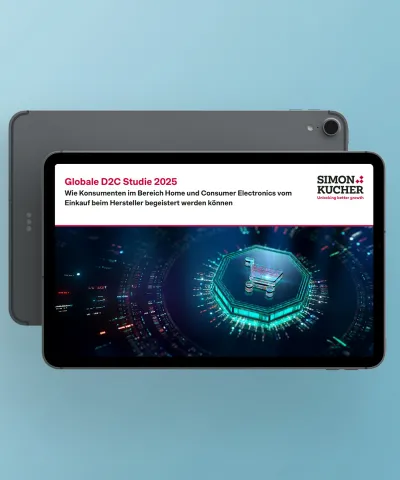Another year has passed and the world welcomes many new technological advancements and trends. From autonomous vehicles and connected cranes, to hyper-personalized customer experiences and promotions, we look at what this all means for businesses and consumers across a wide range of industries. Here are five technologies to have on the radar in 2020:
1. Advancements in 5G and eSIMs
In the early 2010s, we could only imagine a world where every handheld device would be directly connected to the cloud. Now, this vision is becoming a reality. In 2020, two major mobile infrastructure technologies are set to become commonplace: next generation 5G mobile networks and built-in SIM cards, known as eSIMs. Both technologies are important to manage the skyrocketing volume of new devices on mobile networks. The increased bandwidth of 5G enables users to stream high-quality content on mobile devices without any hiccups, and share large files online without the need for Wi-Fi. Meanwhile, eSIMs, the next generation of SIM cards, make it possible to replace a SIM profile dynamically and over the air (OTA).
How will 5G and eSIMs impact business?
- More industries and new players will try to disrupt the market with the Internet of Things (IoT) and Smart Devices, harnessing an array of opportunities to develop new business models that commercialize and monetize these technologies.
- New products and services will be designed to make use of 5G and eSIMs. For example, Vodafone has already demonstrated a possible application with its 5G Connected Crane that can be tele-operated from large distances through the 5G network. Meanwhile, there is talk of eSIMs being used for marketing campaigns (e.g. in apparel, music, events), where consumers download a temporary eSIM profile to gain access to promotions.
- eSIMs will enable customers to switch providers much more easily, even with different plans for voice and data. Mobile network operators are likely to have a harder time retaining customers and will need to develop ways to stay relevant among the increased competition that is fueled by eSIMs, potentially with new price models!
Read more about 5G Marketing, Pricing, and Sales Excellence here!
2. Hyper-personalization in an instant
When is the right moment to present a paywall? What is the best way to capture impulse purchases? What is the right duration for a free trial? The answer is always “it depends”, as every one of us has something unique that makes us tick. Many businesses have already begun offering products and experiences specific to customer segments or even individuals. In 2020, this personalization trend will go one step further: With richer data on customer behavior and real-time data streaming and processing, companies can view each moment of a customer's interaction as its own market, and fully capture fleeting customer needs that come and go within minutes.
How will hyper-personalization impact business?
- In the past, customer profiling tended to create static portraits of customers and segments. By adding time into the equation, companies can treat unique customer moments differently – reacting to customer’s needs when (or even before) they arise. As customer attention spans get shorter, and social media moves in an ephemeral direction, the ability to capture unique moments will be a large competitive advantage.
- However, there are high infrastructure and algorithm requirements involved in bringing hyper-personalization into reality. To capture opportunities in unique moments, companies need to be able to gather real-time data on customer interaction, process and interpret the data, and create data-driven decisions on the fly. This requires well-tuned sensors, data streaming, and processing pipelines, as well as intelligent back-end algorithms.
3. Democratization of Artificial Intelligence (AI) and Machine Learning (ML)
Large tech companies, such as Amazon, Google, and IBM have launched platforms that ease the process of developing and implementing Machine Learning (ML) and AI algorithms. These “AutoML” software platforms enable users to create workflows, process data, and build sophisticated models with little or no coding required. Providers of these solutions hope to expand the network of professionals using Machine Learning and to improve the efficiency of existing Data Science teams.
How will Artificial Intelligence and Machine Learning impact business?
- There are vast opportunities for applied Machine Learning across industries, from churn prediction to sophisticated dynamic pricing algorithms. These platforms will further enable companies to unleash the power of Machine Learning to make smarter data-driven business decisions based on the annotated data used in the model training process..
- Companies must be aware that failing to surround AutoML software with experienced, talented data science professionals can put their business at risk. These projects often still require expert knowledge and experience. Misusage of ML models can jeopardize a company’s trustworthiness and reputation with their customers.
- Over-usage of these platforms can lead to failed projects, high costs, and poor customer experience. The pay-as-you-go model enables a business to scale, but it can also lead to unpredictable and exorbitant costs, especially if the company lacks knowledge on pricing for cloud and computing services.
4. The evolution of augmented analytics
“Hey Siri, what’s interesting about our transactions from last month?” We are used to asking a virtual assistant for answers about almost every aspect of our lives, and this trend is now moving into business. Demand for ever complex analytics has increased dramatically, but with growing data volumes and complexity requirements, data analysis has a similar fate as AI and ML: a lack of talent leads to ever-increasing bottlenecks. To counteract this, augmented analytics are seeing a rise in popularity. Augmented analytics come in many flavors, but the benefits all boil down to the ability for users to ask questions in a simplified user interface and in return receive very detailed insights.
How will analytics impact business?
- Software tools guide and support the user in getting the insights they’re looking for and so – similar to the democratization of AI – move the insight-generation away from the data science teams, and closer to the business.
- With more and more employees able to run self-service analytics that answer their real questions, more decisions will be made based on facts rather than feelings. For example, Tableau has a product called “Ask Data” that generates on-the-fly graphs from questions entered in natural language, such as “What is the average price by product group?”
- Meanwhile, the specialists can spend more time working on complex modelling and analyses that still require a large amount of real data science.
- These systems can generate descriptive insights, but will often fail to take the user to a prescriptive level and answer the question “What should we do about it?”
5. Edge computing and stream processing
While both edge computing and data streaming have been around for a few years, we believe that they will gain popularity in 2020 as demand for speed and reliability increases. In edge computing, data processing takes place close to where the data is generated. This means data no longer needs to travel from the source to the central storage, which enables real-time responsiveness Edge computing is highly responsive and can still function when connection to the cloud cannot be established. With steam processing, systems continuously inject new data into existing processes and analyses in real time, instead of the traditional approach where data is moved and processed in batches.
How will edge computing and steam processing impact business?
- These technologies take business intelligence to the next level, enabling companies to monitor their various KPIs in “true” real-time.
- Stream processing and edge computing will also spark businesses to build new products and services. For example, autonomous cars require image data to be processed immediately as changing conditions occur.
- While traditional cloud computing architecture was restricted by its responsiveness, edge computing is one of the solutions for the latency problem, opening up opportunities for products that adapt to user behavior in real time.








